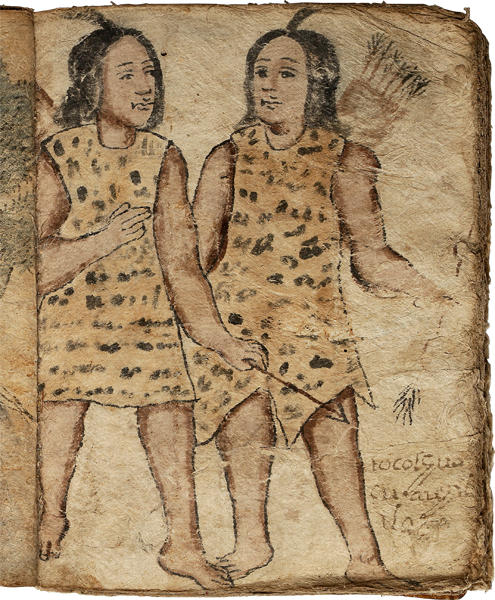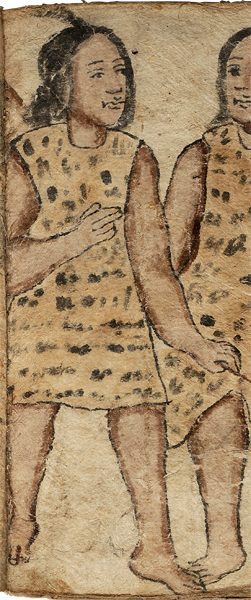f. 7r., indigenous man standing
In this detail, we see an indigenous man standing, bare footed. He wears what may be a jaguar (ocelotl) hide tunic and a quiver on his back. He holds an arrow in his left hand. These may be signs that he was a Chichimec hunter/warrior, an venerable ancestor. His tunic is outlined in black, and it is painted a light brown and has black dots. His skin is also outlined in black and painted brown. Shading on his left leg (on our right) appears to indicate musculature. His left arm hangs down at his side, but also reaches out a bit, for it is holding an arrow. His right arm is bent at the elbow, and he appears to be gesturing with his hand. His black hair is full, but appears to stop at his shoulders. He has what may be a black feather or ponytail coming up off the top of his head. His eyes are shaped with folds on the eyelids and somewhat elevated eyebrows. His mouth has a distinctive curvy line for the top lip and a check-mark at the end of the lip, along with a depression shown between the mouth and nose.
[Note: For a clarification of jaguar (ocelotl) vs. ocelot (tlacoocelotl), see what Gordon Whittaker wrote in an Aztlan post in 2012, hosted here: http://blogs.uoregon.edu/mesoinstitute/about/curriculum-unit-development/stem/ethnozoology/jaguarsocelots/.] [SW]

